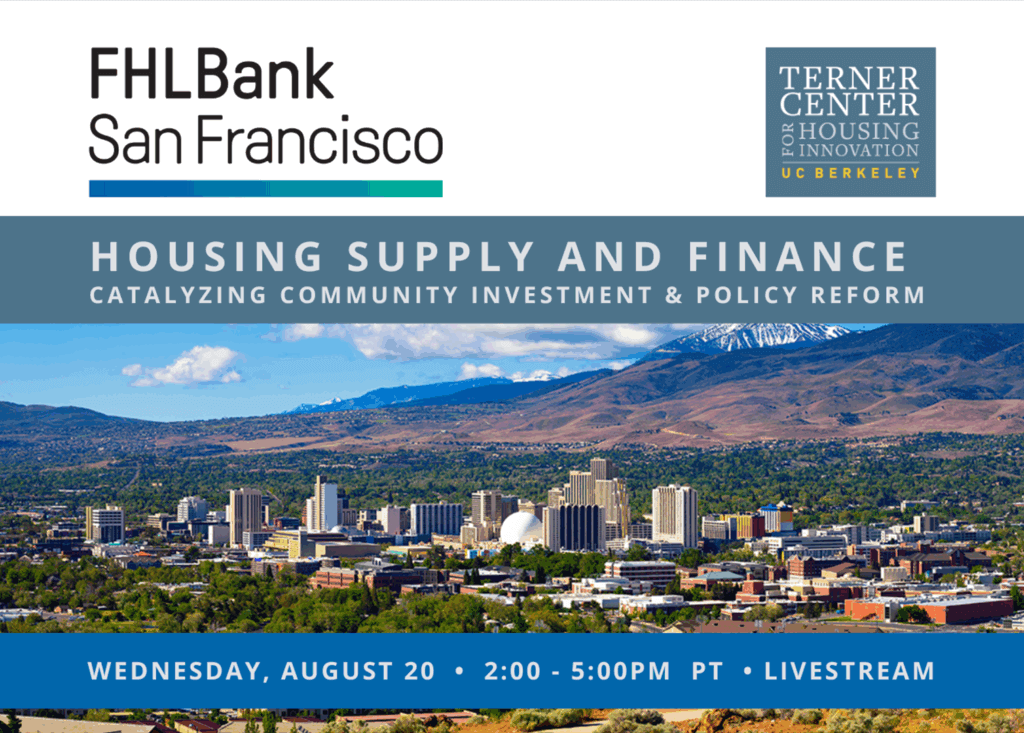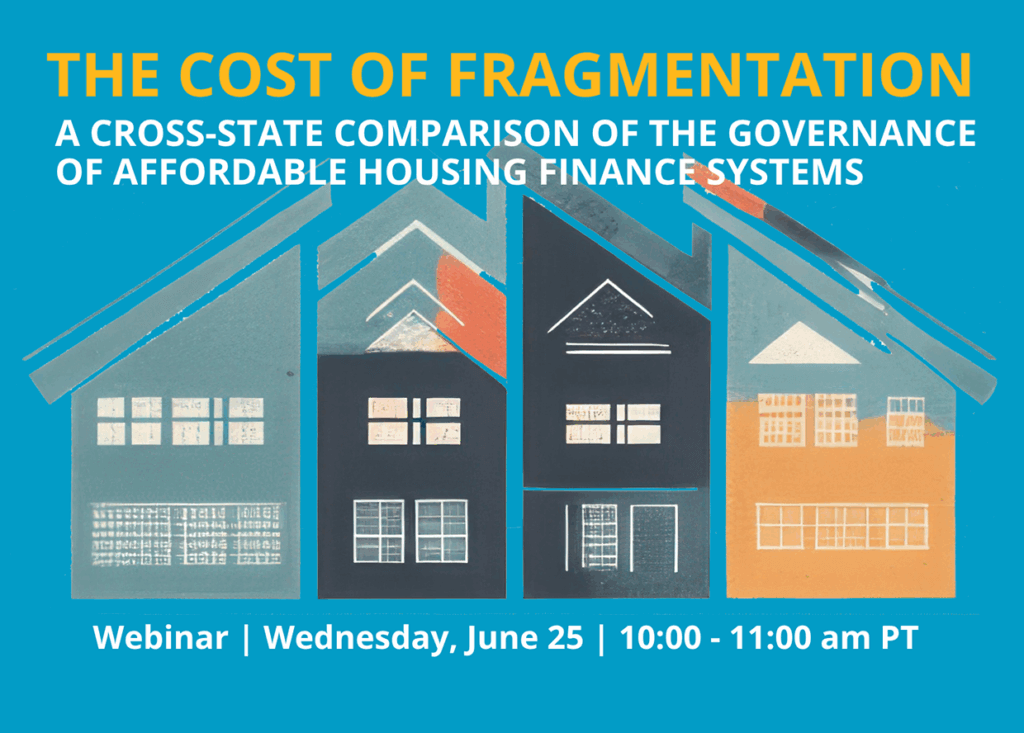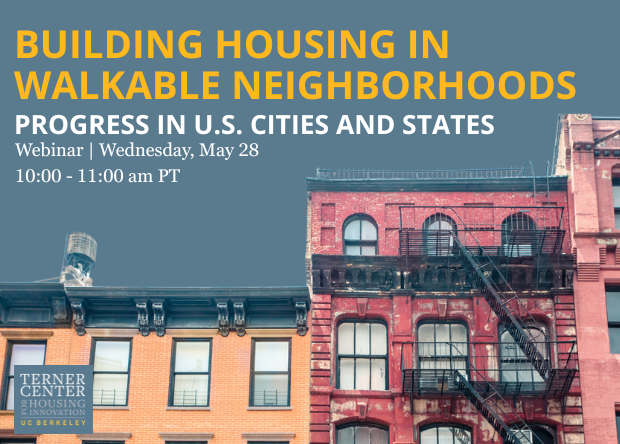Building Stronger Homelessness Systems: Strategies for Effective Coordination
Published On June 12, 2024
Authors: Christi Economy, Ryan Finnigan
The needs of people experiencing or at risk of homelessness often span multiple systems—including housing, healthcare, social welfare, employment, education, and criminal justice. Local coordination across all of them can improve person-centered responses. Research shows that homelessness systems with stronger cross-system coordination and public-private collaboration provide more services and help more people exit homelessness1. To highlight concrete examples of efforts to advance coordination, the Terner Center and Homebase hosted a webinar on June 12, 2024 that featured leaders of homelessness programs working to bridge multiple organizations and systems:
- Katie Wilbur, Executive Director of Elevate Community Services and RH Community Builders
- Mary Kate Johnson, Director of Regional Homelessness Prevention at All Home
- Logan McDonnell, Executive Director of Keep Oakland Housed with Bay Area Community Services (BACS)
Mary Kate Johnson and Logan McDonnell described Keep People Housed, the collaborative regional homelessness prevention system for the Bay Area. Keep People Housed brings together community-based organizations, local government agencies, and philanthropy to target flexible financial assistance and housing-related services to high-risk households. Katie Wilbur spoke about how Elevate Community Services and RH Community Builders are leveraging the California Advancing and Innovating Medi-Cal (CalAIM) program to support their spectrum of homelessness programs—including street outreach, interim housing, and permanent supportive housing—in the Central Valley.
The discussion was moderated by Nicole Johnson, Directing Attorney at Homebase, whose expertise includes lived experience of homelessness. Homebase works with federal, state, and local partners across the country to develop and scale solutions to prevent and end homelessness. Panelists shared how they developed their programs, what they learned along the way, and what they recommend to others for enhancing coordination within their local systems.
This commentary summarizes key lessons from the webinar and connects them to findings from the Terner Center’s collaborative statewide homelessness assessment, which included interviews with hundreds of service providers, local government partners, and other homelessness system stakeholders.2
Collaboration is often sparked by the need to address a specific gap in the range of existing services or the people they serve.
The diverse set of organizations and sectors needed to prevent and end homelessness often have distinct goals or service delivery models. For example, housing providers might focus on rental subsidies, social services agencies might focus on benefits like food assistance through CalFresh, and healthcare providers might focus on medical needs. But all of these supports can be necessary for someone to become stably housed. The webinar panelists said focusing on the gaps or misalignments between existing organizations and programs is a key first step in increasing coordination.
Logan McDonnell described launching Keep Oakland Housed, the precursor to the regional Keep People Housed, in response to rising housing insecurity and homelessness—including the disproportionate displacement of Black households from Oakland—and high downstream costs that occur by waiting to serve people after they lose their housing. Before the pilot, he and his collaborators first took stock of the existing landscape of organizations addressing homelessness, then worked to build consensus around a “mutual North Star.” In this case, it was the benefits of a targeted prevention strategy that uses the latest research to direct resources more efficiently and equitably to the highest risk households. Mary Kate Johnson added that the gap in homelessness prevention partly stemmed from the Bay Area region lacking “a consistent understanding across communities of what homelessness prevention means.” For example, some communities might focus on legal aid for people facing eviction while others provide financial assistance to avoid rent arrears. To help build consensus, Keep People Housed drew on “emerging research that showed that targeting resources was a more efficient and also more equitable way of distributing what have historically been very limited prevention resources.” The program also built on existing and promising models, including the success of Keep Oakland Housed.
Katie Wilbur explained that she began exploring partnerships with managed health care plans to fill the gap in funding for supportive services in the state’s Homekey program. Homekey provides local public entities with capital to rapidly create new interim or permanent supportive housing for people experiencing homelessness—often through acquiring and converting hotels or motels—but the program does not provide long-term funding for supportive services and operations.3 Her goal was to “build sustainable developments and have a way of leveraging services that weren’t dependent on county or city contracts to be able to serve the people residing in the projects. Because we know how important long-term case management and supportive services are in keeping people who have experienced homelessness housed.” CalAIM—which can direct Medi-Cal dollars through managed care plans to community supports like housing navigation or tenancy supports—offered an opportunity to help fund these services. However, Wilbur first had to learn “who the health plans are in your counties that you serve and the different fee structures or billing processes to understand how those budgets are going to work together.” She also noted that each managed care plan—which varies by county—administers CalAIM differently, requiring additional coordination in her organizations’ work across multiple Central Valley counties.
Interviewees from Terner’s collaborative statewide assessment similarly highlighted efforts to address a specific gap as spurring and strengthening cross-organization collaboration. As one such example, many stakeholders pointed to Project Roomkey, the state’s program to shelter medically vulnerable people experiencing homelessness in hotels and motels during the COVID-19 pandemic. They described the program as clearly defining its objectives, as well as different entities’ roles and responsibilities. In the words of one county staff member, Project Roomkey provided “specific dollars to do this specific activity: stand up these motels and help people get off the streets. Try to help them avoid encountering the virus.”4 Implementing Project Roomkey created and strengthened relationships between partners, including homelessness service providers, county welfare departments, and Continuums of Care, which often carried forward to stronger coordination within local homelessness systems.
Private- and public-sector partnerships help catalyze new programs and innovation.
Private funding was essential for launching Keep People Housed, as well as for catalyzing the public funding necessary to scale up the system. Mary Kate Johnson said an initial $12 million philanthropic investment provided the resources needed to incentivize public participation and investment in a more strategic and coordinated way of preventing homelessness. “It was the private funding to help accelerate the model,” she said, “the partnerships which helped develop the model and its content, and then the technology which really put in place the tools to help us scale and start building regional infrastructure.” These initial efforts provided a proof of concept and “created a real operating runway while we were supporting our public partners with making the necessary structural and contractual changes” to align their funding requirements and the prevention system’s approach.
Interviewees from the statewide assessment also highlighted the potential of bridging public and private sectors. For example, in Santa Clara County, Destination: Home is a public-private partnership that brings together local governments, elected officials, community-based organizations, housing developers, corporations, philanthropy, advocates, and people with lived experience of homelessness.5 Interviewees described the organization and its leaders dedicating years to building relationships between its partners and cultivating buy-in for its Community Plan to End Homelessness.6 The organization’s success partly stems from having significant public and private resources available for housing and homelessness programs, including a $950 million affordable housing bond passed in 2016.7 In 2018, the Cisco corporation donated $50 million to Destination: Home, expanding support for direct services and the organization’s platform for promoting effective cross-sector collaboration.8
Interviewees noted that philanthropic funding is not accessible for many organizations, however, and cannot fully replace public funding for supporting programs at scale. Many nonprofit organizations do not or cannot sustain staff dedicated to private fundraising. For example, they pointed out that “the Central Valley receives a minimal amount of state philanthropic funding compared to other regions.”9 The challenges attracting private funding for some organizations or regions further underlines the importance of flexible public funding like HHAP for creating innovative programs and collaborations.
Collaborations are challenging to support with fragmented and one-time funding sources, highlighting the need for flexible and predictable resources aligned with communities’ needs.
Katie Wilbur outlined efforts to expand the range of services CalAIM supports throughout the Central Valley, including street outreach, housing navigation assistance, and supportive services in interim housing sites. Blending CalAIM with other funding sources is complicated, however, in part because it pays per service provided to Medi-Cal members—other homelessness funding sources tend to be grant programs. For example, she recounted how the Fresno-Madera Continuum of Care increased the availability of housing navigation services by hiring navigators dedicated to Medi-Cal members and using CalAIM funding. People not enrolled in Medi-Cal worked with housing navigators funded by the Continuum of Care. This required some changes to their local assessment and prioritization system to identify and direct Medi-Cal members versus non-members to the appropriate housing navigator.
Wilbur also shared how in order to grasp the differences between these funding models and develop the “knowledge and understanding of how CalAIM services could work in support or not in different situations,” Elevate Community Services and RH Community Builders rely on combined experience that spans housing development, homelessness services, and mental health services. She added that “frequent and open conversations” between partners are needed to address the question “what’s working well, and what’s not working well?” Technical assistance and sharing more about the implications of different types of funding across partners from different sectors can help to develop a shared understanding of regulatory requirements, risk, and opportunities to better leverage available resources.
BACS and All Home also confronted complicated funding requirements when trying to implement Keep People Housed. For example, Mary Kate Johnson described how some funding sources for homelessness prevention “historically operated on a first-come, first-served basis” with limitations on the amount of assistance for each household. She noted that these requirements did not align with “what the evidence was telling us about what really works to prevent homelessness.” For example, the people who need assistance most are often not able to be the first to request it. Additionally, fixed limits on amounts of financial assistance can often be lower than what people need to cover rent shortages and stay housed. Johnson emphasized the importance of “keeping your eye on the goal versus the rule” as part of their efforts to change funding requirements that could undermine effectiveness and equity. Logan McDonnell further emphasized the need to focus on equity when trying to reach the people at the highest risk of homelessness with limited resources, particularly given the systematically higher risks of displacement and homelessness for Black people and households.
These challenges highlight the ongoing need for flexible and stable funding for preventing and ending homelessness, which interviewees in the statewide assessment said is crucial for closing service gaps and sustaining collaborations between organizations and sectors. Many interviewees pointed to California’s flexible block grant programs as furthering these goals, namely the multiple rounds of the Homeless Housing, Assistance, and Prevention Grant (HHAP) program, which has distributed funding to counties, large cities, and Continuums of Care since 2019. HHAP grantees started new programs they previously lacked funding to support, including things like homelessness prevention and safe parking sites.10 HEAP and HHAP also helped fill funding gaps to sustain and improve existing programs. One interviewee shared how this type of block-grant funding enabled their county’s largest shelter to operate 24/7 when it previously had insufficient resources to operate during the day. Another interviewee said “HHAP is the most flexible funding source that I have ever come across in my professional experience,” which “allowed us to put out a lot of fires and save a lot of projects.”1112
Interviewees also stated that flexible funding like HHAP could be more effective if it were a stable and predictable allocation over time. The state has included $1 billion for a 6th round of HHAP funding in the 2024–25 budget, but it was initially slated to be cut due to the state’s budget deficit. Interviewees explained that building new programs and hiring new staff is risky when relying on one-time funding allocations for which renewals are uncertain.
A high-capacity ‘quarterback’ entity can foster necessary relationships between organizations and sectors.
Overcoming the barriers and pursuing the opportunities described above requires proactive leadership. Mary Kate Johnson emphasized how All Home’s strength as an “advocate and convener” strongly complemented BACS’s expertise as a service provider when developing and scaling a coordinated regional network of homelessness prevention programs. She explained that All Home was able to “leverage a lot of relationships” across a diverse set of stakeholders. “You need the buy-in from the public partners, the willingness to make cultural and operational shifts to different ways of working,” she said. “You need the nonprofit sector, bringing in service providers with expertise in case management and helping people meet emergency needs with financial assistance and so forth. And philanthropy, which is really critical.” Johnson further noted the importance of recognizing “the players that are already in the space,” then connecting groups “who maybe had not previously been in dialogue” to accelerate their work and expand into new communities. Logan McDonnell said that BACS’s partnership with the East Oakland Collective helped them reach and serve Black men at risk of homelessness due to their involvement with the criminal justice system. He also detailed community partnerships to improve the prevention model’s cultural responsiveness—in particular to better serve people who do not have citizenship and may be wary of engaging with service providers.
In the Central Valley, Elevate Community Services and RH Community Builders have bridged different kinds of organizations, including local governments, Medi-Cal managed care plans, Continuums of Care, and homelessness organizations. Katie Wilbur discussed how “being on the front edge of implementing CalAIM let us really lean into the relationships with the managed care plans.” It helped them identify where the managed care plans’ one-time funding allocations could be directed toward making new supporting housing development feasible, followed by ongoing services funding through CalAIM.
Interviewees from the statewide assessment echoed the value of ‘quarterback’ entities for building relationships between partners and aligning funding toward the same goal. For example, the leader of one Continuum of Care talked about spending much of his time building bridges and mitigating tensions between partners: “the bulk of my work is to try to bring a sense of trust, transparency, a lot of communication, so that we can better work together.”13 Quarterback entities can foster consistent communication about both day-to-day matters and long-term program and homelessness system planning.
As another example, interviewees in San Diego described how one entity is primarily responsible for aligning their homelessness funding. This has allowed them to strategically fund a diverse range of coordinated services including outreach teams, diversion programs, infrastructure for shelters, a pool of rental units available to households experiencing homelessness, and training for service providers. In Los Angeles, stakeholders spent years building widespread support for long-term solutions. These efforts included launching stakeholder coalitions like the Business Leaders Task Force on Homelessness, piloting successful projects like the Flexible Housing Subsidy Pool, and targeting investments to reduce homelessness among specific populations (including veterans).14
Increasing coordination between organizations and sectors goes hand-in-hand with broader efforts to expand homelessness and housing systems capacity.
The importance of expanding the capacity of local homelessness and housing systems ran throughout the webinar discussion—serving more people, meeting a wider variety of needs, and increasing available resources. Keep People Housed built on existing programs and assessed the current infrastructure—organizations, technology, funding—as a starting point. The collaboration between All Home, BACS, and their many other public, nonprofit, and private-sector partners has continued increasing local systems’ capacities. Similarly, the integration of CalAIM into a wide range of homelessness programs in the Central Valley expands resources overall and helps both the housing and healthcare sectors learn how to work together effectively.
The panelists also highlighted the importance of meaningfully including people with lived experience of homelessness into program design and implementation. For Keep People Housed, they were core contributors to designing the assessment tool and strategies for reaching at-risk households. Many staff members of homelessness organizations have valuable lived expertise to contribute to their work, which can be proactively incorporated. For example, moderator Nicole Johnson shared that she has experience with homelessness service delivery as a shelter resident, case manager, director, and now a technical assistance provider. Stakeholders from across the state also emphasized the need for people with lived experience of homelessness to help guide overall system priorities and decisions.
In conclusion, effective, person-centered approaches for addressing homelessness—which recognize that people’s health, social, economic, and housing needs are interconnected—require these diverse organizations to align their efforts as seamlessly as possible. That can be difficult. As Mary Kate Johnson pointed out, the work of coordinating across partners “can be messy.” Even so, she advises folks to “get into the mess” by working through challenges to develop strong connections with other partners. This can ultimately help organizations “build something more strategic and more creative, that works better for everyone and the people that we serve.”
Acknowledgements
We thank Nicole Johnson, Amanda Wehrman, and Nikka Rapkin at Homebase for their partnership organizing this webinar. We also thank the panelists for generously sharing their time and insights. Nichole Fiore contributed to the analysis of the interview data. Carolina Reid, Sarah Karlinsky, and Ben Metcalf helpfully reviewed this commentary. Chansonette Buck, Geraldine Slevin, and Sheela Jivan supported the commentary’s publication.
The statewide study of efforts to address homelessness across California was conducted in 2022 by the Terner Center, Abt Associates, and UCSF’s Benioff Homelessness and Housing Initiative. This research project was a collaborative effort supported by over 50 staff members from the participating organizations. The research team would like to thank the hundreds of interviewees working to address homelessness who shared their time and expertise. The team is especially grateful to the people with lived experience of homelessness who shared their stories and insights.
We would like to thank the California Interagency Council on Homelessness (Cal ICH), which provided funding to support the data collection for this research project. Cal ICH did not have a role in analyzing the data or interpreting the findings for this commentary.
Endnotes
1Kim, S. & Sullivan, A. (2023). “Connecting the composition of collaborative governance structure to community-level performance in homeless services.” Public Administration Review, 83, no.4: 734-49, https://doi.org/10.1111/puar.13632.
Lee, D., McGuire, M., & Kim, J. (2022). Collaboration, strategic plans, and government performance: the case of efforts to reduce homelessness. In J. Bryson, L. Hamilton Edwards, & D. Van Slyke (Eds.), Toward a More Strategic View of Strategic Planning Research. London: Routledge.
Mosley, J. Y& Park, S. (2022). “Service Providers’ Influence in Collaborative Governance Networks: Effectiveness in Reducing Chronic Homelessness.” Journal of Public Administration Research and Theory, 32, no.1: 130–49, https://doi.org/10.1093/jopart/muab013
Evans, W., Phillips, D., & Ruffini, K. (2021). “Policies to Reduce and Prevent Homelessness: What We Know and Gaps in the Research.” Journal of Policy Analysis and Management, 40, no.3: 914-63, https://doi.org/10.1002/pam.22283
Hambrick, S. & Rog, D. (2000). “The Pursuit of Coordination: The Organizational Dimension in the Response to Homelessness.” Policy Studies Journal, 28, no.2: 353-64, https://doi.org/10.1111/j.1541-0072.2000.tb02035.x
2 For more information on the study’s qualitative data collection and analysis, see: Finnigan, R., Economy, C., & Reid, C. (2023). “Addressing Homelessness in California: A Collaborative Research Series— Qualitative Data and Methods.” Terner Center for Housing Innovation, UC Berkeley. Retrieved from: https://ternercenter.berkeley.edu/wp-content/uploads/2024/02/Address-Homelessness-in-CA-series_qualitative-methods_Jan-2024.pdf
3 Reid, C., Finnigan, R., & Manji, S. (2022). “California’s Homekey Program: Unlocking Housing Opportunities for People Experiencing Homelessness.” Terner Center for Housing Innovation, UC Berkeley. Retrieved from: https://ternercenter.berkeley.edu/blog/homekey-unlocking-housing-opportunities-homelessness/
4 Stakeholder interview, Greater Sacramento, April 12, 2022.
5 Who We Are. (n.d.). Destination Home. https://destinationhomesv.org/who-we-are/
6 Community Plan to End Homelessness. (n.d.). Destination Home. https://destinationhomesv.org/community-plan/
7 2016 Measure: A Housing Bond. (n.d.). Destination Home. https://destinationhomesv.org/investing-in-affordable-housing/2016-measure-a-housing-bond/
8 A practical guide: Working together to address homelessness. (2021). CISCO. https://www.cisco.com/c/dam/en_us/about/csr/reports/destinationhome-practicalguide-ebook.pdf
9 Stakeholder interview, San Joaquin Valley, August 12, 2022.
10 Homeless Coordinating and Financing Council Annual Funding Report. (2021). California Homeless Coordinating and Financing Council. Retrieved from: https://www.bcsh.ca.gov/calich/documents/2020_grants_annual_report.pdf
11 Stakeholder interview, Central Valley, May 25, 2022.
12 Stakeholders also said that the HHAP program spurred greater coordination by requiring local homelessness action plans formulated on behalf of partners across sectors and overlapping jurisdictions. The state allocates HHAP funding to all 58 counties, 44 CoCs, and the 13 largest cities. Cities, counties, and CoCs are required to submit action plans that outline regional goals and strategies for addressing homelessness and how activities supported with HHAP funds align with this plan.
13 Stakeholder interview, Central Valley, April 20, 2022.
14 Developing and Passing Proposition HHH and Measure H: How It Happened and Lessons Learned. (2018). Abt Associates. Retrieved from: https://www.hiltonfoundation.org/wp-content/uploads/2018/02/Proposition-HHH.-Measure-H_Final_GraphicsUpdate05.25.2018.pdf





